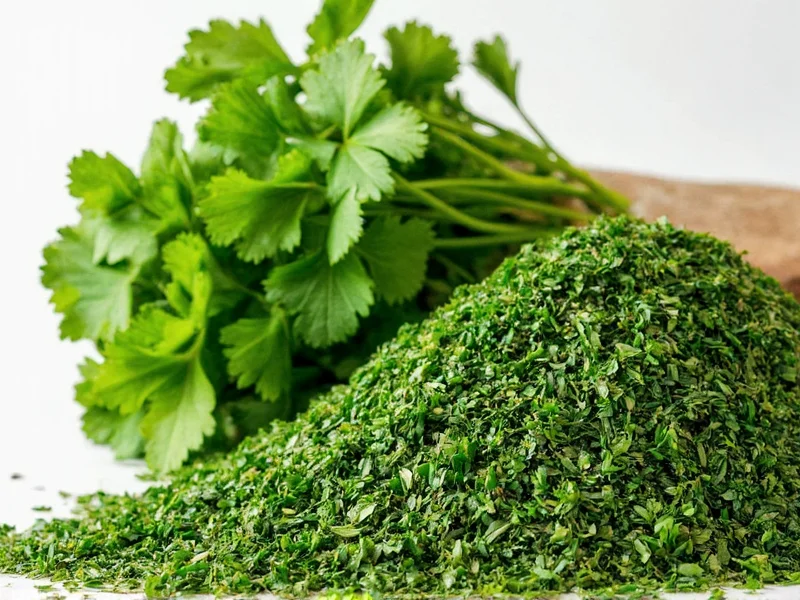Understanding herb conversions is essential for consistent cooking results. When substituting dried parsley for fresh (or vice versa), the key factor is moisture content. Fresh parsley contains approximately 85-90% water, while dried parsley has most of this moisture removed through the drying process. This concentration means dried herbs deliver more intense flavor by volume.
Understanding the Fresh to Dried Parsley Conversion
The 3:1 ratio (three parts fresh to one part dried) isn't arbitrary—it's based on the fundamental difference in density and water content between the two forms. When you remove water from fresh parsley through drying, the remaining plant material becomes more concentrated. This concentration affects not just volume but also flavor intensity.
Complete Parsley Measurement Conversion Chart
| Fresh Parsley | Dried Parsley | Common Recipe Application |
|---|---|---|
| 1 cup chopped | ⅓ cup | Large batch soups or stews |
| ½ cup chopped | 3 tablespoons | Casseroles or meatloaf |
| ¼ cup chopped | 1½ tablespoons | Sauces and dressings |
| 2 tablespoons | 2 teaspoons | Small side dishes |
| 1 tablespoon | 1 teaspoon | Finishing touches, garnishes |
Practical Substitution Tips for Cooking
When substituting dried parsley for fresh in recipes, consider these practical guidelines:
- Add dried herbs earlier: Dried parsley needs time to rehydrate and release its flavor, so add it during the cooking process rather than at the end
- Adjust to taste: The 3:1 ratio is a starting point—always taste and adjust as needed since herb potency varies by brand and storage
- Reconstitute when possible: For applications where fresh texture matters (like salads), briefly soak dried parsley in warm water before use
- Consider flavor differences: Dried parsley has a more earthy, concentrated flavor compared to the bright, grassy notes of fresh
Flavor Profile Comparison: Fresh vs Dried Parsley
Fresh parsley offers bright, grassy notes with subtle peppery undertones, while dried parsley develops deeper, more earthy characteristics. The drying process concentrates certain compounds while diminishing others, resulting in these distinct flavor profiles:
- Fresh parsley: Higher in volatile oils that provide bright, green notes; best added at the end of cooking
- Dried parsley: More concentrated in certain bitter compounds; benefits from longer cooking time to mellow flavors
When to Use Each Form of Parsley
Understanding when to use fresh versus dried parsley can elevate your cooking:
- Use fresh parsley for: Garnishes, salads, chimichurri, tabbouleh, and any dish where bright, fresh flavor is essential
- Use dried parsley for: Long-simmered sauces, soups, stews, spice blends, and recipes where texture isn't critical
Storage Recommendations for Maximum Freshness
Proper storage extends the usability of both forms:
- Fresh parsley: Trim stems, place in water like flowers, cover loosely with plastic bag, and refrigerate (lasts 1-2 weeks)
- Dried parsley: Store in airtight container away from light and heat (maintains potency for 6-12 months)
Common Substitution Mistakes to Avoid
Cooks often make these errors when substituting parsley forms:
- Using equal volumes (1:1 ratio) which results in under-seasoned dishes
- Adding dried parsley at the end of cooking, resulting in harsh, undeveloped flavor
- Using dried parsley in applications requiring fresh texture (like salads)
- Not adjusting for recipe moisture content—dried herbs work better in wet dishes
Special Considerations for Different Recipes
Certain dishes require special attention when substituting:
- Soups and stews: Dried parsley often works better as it has time to rehydrate
- Sauces and dressings: Fresh parsley provides better texture and brighter flavor
- Baked goods: Dried parsley integrates more evenly in doughs and batters
- Garnishes: Always use fresh for visual appeal and texture











 浙公网安备
33010002000092号
浙公网安备
33010002000092号 浙B2-20120091-4
浙B2-20120091-4